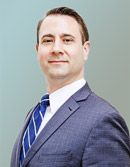Below you will find a real life case study of a couple who is looking for financial advice on how best to arrange their financial affairs. Their names and details have been changed to protect their identity. The Globe and Mail often seeks the advice of our Portfolio Manager & Senior Financial Planner, Matthew Ardrey, to review and analyze the situation and then provide his solutions to the participants.
![]()
Written by: Dianne Maley
Special to The Globe and Mail
Published February 8, 2025

What’s the best way for Mark, 62, and Rebecca, 59, to use a $1-million inheritance?
Mark and Rebecca have a jointly held consulting company from which they each draw a salary, leaving any surplus over their basic living expenses in the corporation.
Mark and Rebecca are at a “turning point of sorts, where the past is no longer indicative of the years ahead,” Mark writes in an e-mail. He is 62 years old; Rebecca is 59.
They have recently finished paying off the mortgage on their Montreal-area house. And their 24-year-old son, who still lives at home, has finished his graduate studies and is working full time, so they no longer have education-related expenses.
Mark and Rebecca have a jointly held consulting company from which they each draw a salary, leaving any surplus over their basic living expenses in the corporation. They are drawing a combined $130,000 a year after income tax and Quebec Pension Plan contributions. They hope to retire in about five years with a spending goal of $80,000 a year after tax.
Perhaps the biggest challenge Mark and Rebecca face is an imminent $1-million inheritance. They want to leave the money to their son but realize they may need to use some of it themselves. In the meantime, they’re agonizing over how to safely invest it given the “current market conditions,” Mark adds.
Should they dive into the stock market all at once? Or invest in regular instalments? Should they set up a ladder of guaranteed investment certificates?
We asked Matthew Ardrey, a certified financial planner and portfolio manager at TriDelta Private Wealth in Toronto. Mr. Ardrey also holds the advanced registered financial planner designation.
What the expert says
Mark and Rebecca would like to preserve the inheritance money for their son as part of their estate. “Thus, we looked at their retirement plan as if there was no inheritance at all,” Mr. Ardrey says.
Assuming their son moves out when they retire, their spending will drop to $80,000 a year and then to $70,000 a year five years after that. All expenses are subject to 3-per-cent inflation. “There are some minimal surpluses preretirement that are saved to their tax-free savings accounts,” the planner says.
Their Quebec Pension Plan entitlement is based on their estimated amounts of 88 per cent of maximum for Mark and 92 per cent of maximum for Rebecca. These are taken at retirement, along with Old Age Security benefits. Life expectancy for both is age 95.
The forecast has them starting to draw dividends from the $300,000 saved in the corporation at retirement. “These are $3,000 per month and last for 10 years before the assets are exhausted.” As well, Mark has a pension of $7,600 a year, which is indexed to inflation.
Their current asset mix is almost 97 per cent cash and GICs. “This creates a low expected rate of return of 2.24 per cent,” Mr. Ardrey says. “Based on these assumptions, the plan fails when Rebecca is age 93.”
To ensure the viability of this plan, Mr. Ardrey stress tested it by using a Monte Carlo simulation, which introduces randomness to a number of factors, including returns, to estimate the success of a retirement plan
Should you start collecting CPP at age 65 or earlier? Our CPP calculator compares the benefits.
Based on the Monte Carlo analysis, the plan has an 84-per-cent chance of success, which is close to the likely threshold but still could use some improvement, the planner says.
The sale of real estate is one option that Mark and Rebecca can use in later life. They have a paid-off home worth $1-million. “Given the risk is small in the Monte Carlo simulation, they could hedge it by knowing they have this asset to fall back on,” he says.
Another option they could look at is life insurance to fund the future inheritance for their son. “If they were to purchase a joint last-to-die policy and then use the remaining inheritance for themselves, this would provide their son with a tax-free inheritance equal to the face value they chose,” Mr. Ardrey says. This would be instead of an investment portfolio, which would have embedded capital gains in it.
Rebecca and Mark ask what the best way is to invest the inheritance for the future. “The asset mix chosen would be based on whether they are using any of these funds themselves or they are all for their son in the future after the parents die.”
They may also want to consider giving their son some of his inheritance early. “Perhaps he could use the funds more at age 35 than 65,” Mr. Ardrey notes.
Rebecca and Mark bring up the idea of gradually investing the funds in the markets over a number of years. “From what I know of them as investors, they seem quite risk averse,” the planner says. “This is an important factor when considering how much of the funds to deploy at any given time.”
Over the long term, assuming that economies and companies continue to grow, gradual investing will not make a significant difference, he says, “but in the short term I believe it will provide comfort for them.” He recommends keeping a good portion of funds that have not yet been invested liquid and not locked in. “This way if we get a material market pullback, they can invest more at the lower valuations,” Mr. Ardrey says.
The final question they ask is which accounts to hold the inheritance money in. “The RRSP is a no-go,” the planner says. Their incomes are relatively low now and the RRSP deduction would hold little benefit for them. If they do not want the TFSA room for their own planning, it would be a great place to tax shelter future gains for their son, he says.
They could also invest some of the funds in their son’s name in a first-home savings account and a TFSA. “They could use some of those funds to help their son with his first home purchase and also limit the taxable income to themselves at the same time,” the planner says.
Client situation
The people: Mark, 62, Rebecca, 59, and their son, 24.
The problem: How to prudently invest their inheritance to preserve it for their son as part of their estate. Will they need to tap the inheritance money for their own living expenses?
The plan: Consider moving to a more balanced investment portfolio. Invest the inheritance money gradually if they want to. Consider giving their son an advance inheritance in the forms of a FHSA and a TFSA. Alternatively, they could buy a life insurance policy.
The payoff: A better understanding of the alternatives.
Monthly net income: $10,830.
Assets: Corporate cash and GICs $300,000; bank accounts $26,000; inheritance $1,000,000; his TFSA $11,000; her TFSA $21,000; his RRSP $30,000; her RRSP $20,000; market value of his defined contribution pension plan $200,000; residence $1,000,000. Total: $2.6-million.
Monthly outlays: Property tax $735; home insurance $165; electricity $135; heating $100; maintenance, garden $500; car lease $500; other transportation $530; groceries $1,665; clothing $210; gifts $100; dining, drinks, entertainment $540; personal care $125; pets $255; sports, hobbies $210; subscriptions $360; other personal $200; doctors, dentists $165; life insurance $135; phones, TV, internet $375; contingency funds $500. Total: $7,505. Remaining $3,325 is left in their corporation.
Liabilities: None.
Want a free financial facelift? E-mail finfacelift@gmail.com.
Some details may be changed to protect the privacy of the persons profiled.

Presented By:
Matthew Ardrey
Portfolio Manager & Senior Financial Planner
matt@tridelta.ca
(416) 733-3292 x230
